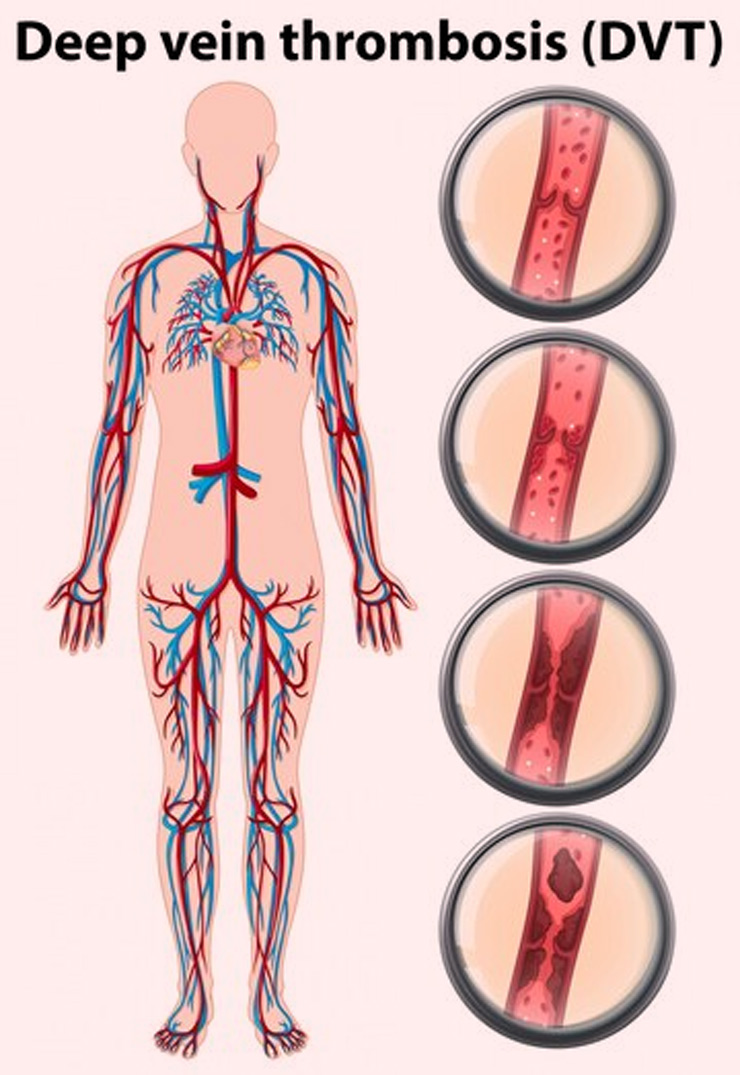
Pancreatic cancer, often called the 'silent killer,' can display mild symptoms that are easily ignored. While abdominal discomfort and digestive issues are commonly discussed, early signs may also manifest in the legs. These leg-related symptoms, though often dismissed, can provide important clues that could lead to a timely diagnosis. We spoke to our expert Dr Meghal Sanghavi, Oncosurgeon, Wockhardt Hospitals, Mumbai Central, who listed signs of pancreatic cancer on the legs that you should not ignore.
Table of Content:-
As stated by StatPearls, pancreatic cancer, which begins in the pancreatic duct cells and is referred to as pancreatic ductal carcinoma, is the fourth leading cause of cancer-related deaths in the United States. The five-year survival rate for this cancer is between 5-15%, while the overall survival rate is only 6%.
Signs of Pancreatic Cancer on Legs
1. Deep Vein Thrombosis (DVT)

A notable sign of pancreatic cancer in the legs is the development of DVT. The condition arises when a blood clot forms in one of the deep veins, typically in the legs. “The formation of clots is more common in cancer patients because cancer can increase the body's tendency to form blood clots. The affected leg will display swelling, redness, warmth, and tenderness,” said Dr Sanghavi. According to the American Cancer Society, in some cases, a fragment of the clot may detach and travel to the lungs, potentially causing difficulty breathing or chest pain.
2. Unexplained Leg Pain
Persistent or unexplained leg pain is another possible symptom of pancreatic cancer. This type of pain may not be related to any injury or overuse, and it might not improve with typical treatments like rest or over-the-counter pain medications. This pain may result from pressure on veins due to a blood clot or reduced circulation associated with cancer.
Also Read: Pancreatic Cancer: Why It's Mostly Silent And Ways To Detect It Early
3. Skin Discolouration or Rash

“Pancreatic cancer can sometimes lead to noticeable changes in the skin, including redness or darkened areas on the legs. These changes could be mistaken for a minor rash, irritation, or an allergic reaction. However, they may indicate a deeper issue, such as impaired circulation or clotting problems,” added Dr Sanghavi. The skin may appear blotchy or take on a purplish hue, which can be a sign that the body’s blood flow is being affected by cancer.
4. Swelling or Oedema
Swelling in one or both legs, especially if it appears suddenly or is more pronounced at the end of the day, should be considered a red flag. This condition, known as oedema, occurs when excess fluid builds up in the tissues of the legs, causing them to become puffy or swollen. In the case of pancreatic cancer, oedema can result from blockages in blood flow caused by the tumour or from blood clotting factors associated with cancer.
Also Read: Pancreatic Cancer: Expert Lists Important Tests To Detect This Cancer
5. Fatigue and Weakness in the Legs

“Cancer often leads to generalised weakness and fatigue, which can make everyday activities, including walking, feel more challenging. If you notice that your legs feel unusually weak or that you are struggling with tiredness even after a good night’s sleep, it could be a sign of an underlying problem, such as pancreatic cancer,” explained Dr Sanghavi. This weakness may not be due to physical exertion but rather the body’s response to the disease. It could also stem from the impact of cancer on circulation or the nervous system, which can cause difficulty moving the legs or standing for long periods.
What to Do If You Notice These Symptoms
While these signs are not exclusive to pancreatic cancer, their presence warrants immediate medical attention. A combination of symptoms, especially alongside other indicators like jaundice, weight loss, or abdominal pain, should prompt further investigation.
Dr Sanghavi concluded, “Early detection of pancreatic cancer can significantly improve the chances of successful treatment. If you observe unusual changes in your legs, consult a healthcare professional promptly for proper evaluation and diagnosis.”
[Disclaimer: This article contains information provided by an expert and is for informational purposes only. Hence, we advise you to consult your professional if you are dealing with any health issues to avoid complications.]
Also watch this video
How we keep this article up to date:
We work with experts and keep a close eye on the latest in health and wellness. Whenever there is a new research or helpful information, we update our articles with accurate and useful advice.
Current Version